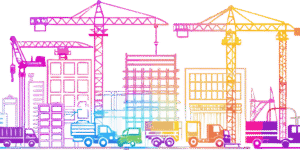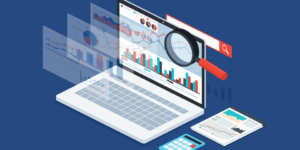Only a few years ago, commercial real estate was considered the final frontier for technology. Technology innovators saw tremendous potential to create efficiency and optimize traditional processes, but the industry was slow to adopt a new set of tools. Today, the narrative couldn’t be more different. Commercial real estate stakeholders are enthusiastically embracing property technology, and the industry is hungry for new innovations. In 2025, 81% of commercial real estate companies plan to increase spending on data and technology, according to Deloitte’s 2025 Commercial Real Estate Outlook report. Overwhelmingly, generative AI will be the most important and widely adopted new technology in the commercial real estate industry next year—but gen AI isn’t the only reason to be excited. Here are the top three technologies developers will want to adopt in order to stay competitive in 2025.
Generative AI
Generative AI has quickly become an ubiquitous and polarizing topic. People across industries are excited—and at times afraid—of its capability to thoughtfully generate unique content, thoughts, ideas and images. Gen AI has the potential to unlock tremendous value for the business world, and commercial real estate stakeholders in particular are excited to apply the technology in the coming year, with about half of the industry expecting to realize the full benefits of AI in the next one to three years. Generative AI in commercial real estate can be applied to almost every business function, from acquisitions and investor relations to property operations and asset management.
In 2024, Northspyre launched “Northspyre AI,” the first gen AI tool created specifically for commercial real estate developers. The program leverages data from Northspyre’s impressive portfolio of more than $175 billion in development projects and hundreds of thousands of project documents to develop the software’s algorithm. Northspyre AI is able to eliminate scope gaps during the construction bidding, identify cost-saving opportunities by scanning every line item in a project’s budget and nearly eliminate change orders during construction. The tool has the capability to significantly reduce costs, with the potential to save upwards of $1 million on a large project. When gen AI is applied throughout the project, like during acquisition, financing, and property operations, the savings could be even greater for developers.
AI-Driven Predictive Analytics
For developers, predicting the future is part of the job. After all, with two-to-three years from a property’s conception to delivery, developers need to ensure that the property is relevant to the end user. Predictive analytics have been an important part of that process by using machine learning to analyze broad data sets and patterns and then provide the most likely outcome or outcomes. Next year, AI will give predictive analytics a boost. New programs apply AI capabilities to predictive analytics models to pull better and more timely data, processing information faster and delivering better results that are both more accurate and more time sensitive.
Commercial real estate stakeholders can use AI-driven predictive analytics to make forecasts about market trends and property performance. Developers in particular will benefit from improved site selection and financial forecasting with predictive analytics tools that leverage AI, like the one in Northspyre’s Portfolio Analytics Plus feature. By making informed decisions with real-time information and the most relevant datasets, developers are able to reach targeted outcomes and deliver the project according to the original schedule and budget. As a result, AI-driven predictive analytics reshape risk models, allowing developers to expand their reach and the projects they are able to pursue.
Blockchain and Cybersecurity
Alongside technology innovation and digitization, the occurrence of cybercrimes and fraud has increased. Cybercrime is a serious problem for businesses. According to a report from the World Economic Forum, financial damages from cybercrime activity topped $12.5 billion last year, and that number is growing at a rate of 10% to 15% annually, depending on the source. These are staggering figures that put cybercrime activity on par with some of world’s largest economies. Commercial real estate stakeholders see the largest exposure to cybercrime though WiFi networks, power supply hardware and portfolio management software.
The business community cannot sleep on this problem. Companies need to have an active defense in place to combat fraud and cyber theft through a robust security infrastructure and a systematized process to scan and identify potential threats. Commercial real estate companies should adopt internal cybersecurity technologies or partner with a third party security company to ensure that internal systems are protected. In addition, they can digitize the way that transactions are completed through tools like Blockchain. The Blockchain is a decentralized system for sharing and recording information where data is separated and stored in a chain, making it difficult to hack. It is a valuable tool for commercial real estate stakeholders because it can be used to exchange physical assets, like real property, or intellectual property.
These three trends will dominate conversations about technology in commercial real estate in the next year, but there are an endless number of innovations transforming the industry. Developers are also excited about augmented reality, ESG compliance software and digital twin technologies. All of these solutions are providing value to the industry. So, no matter where you are investing your tech dollars, 2025 will be an exciting year.



